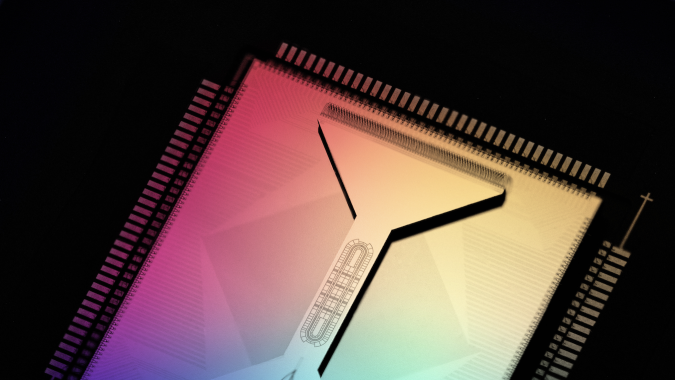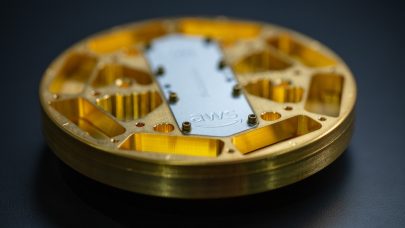


Mystery Solved: Intel’s Former HPC Chief Now Running Software Engineering Group
Last year, Jeff McVeigh, Intel's readily available leader of the high-performance computing group, suddenly went silent, with no interviews granted or appearances at press conferences.
It le …

Intel’s Vision Advantage: Chips Are Available Off-the-Shelf
The chip market is facing a crisis: chip development is now concentrated in the hands of the few.
A confluence of events this week reminded us how few chips are available off the shelf, a conc …

HPCwire’s 2024 People to Watch
Find out which 12 HPC luminaries are being recognized this year for driving innovation within their particular fields.

The VC View: Quantonation’s Deep Dive into Funding Quantum Start-ups
April 11, 2024
Yesterday Quantonation — which promotes itself as a one-of-a-kind venture capital (VC) company specializing in quantum science and deep physics — announce Read more…

MLPerf Inference 4.0 Results Showcase GenAI; Nvidia Still Dominates
March 28, 2024
There were no startling surprises in the latest MLPerf Inference benchmark (4.0) results released yesterday. Two new workloads — Llama 2 and Stable Diffusion Read more…

AWS Reports Improved Quantum Error Correction based on Dual-rail Erasure Qubit
March 20, 2024
AWS today reported demonstrating an improved approach to quantum error correction that accounts for flip and phase errors in qubits with less overhead (redundan Read more…

Nvidia Showcases Quantum Cloud, Expanding Quantum Portfolio at GTC24
March 18, 2024
Nvidia’s barrage of quantum news at GTC24 this week includes new products, signature collaborations, and a new Nvidia Quantum Cloud for quantum developers. Wh Read more…

Apple Buys DarwinAI Deepening its AI Push According to Report
March 14, 2024
Apple has purchased Canadian AI startup DarwinAI according to a Bloomberg report today. Apparently the deal was done early this year but still hasn’t been pub Read more…

PASQAL Issues Roadmap to 10,000 Qubits in 2026 and Fault Tolerance in 2028
March 13, 2024
Paris-based PASQAL, a developer of neutral atom-based quantum computers, yesterday issued a roadmap for delivering systems with 10,000 physical qubits in 2026 a Read more…

Google, XPRIZE Launch $5M Quantum Application Challenge
March 4, 2024
Google Quantum AI, the XPRIZE Foundation, and the Geneva Science and Diplomacy Anticipator (GESDA) Foundation have announced a 3-year, $5 million global competi Read more…

Q-Roundup: Google on Optimizing Circuits; St. Jude Uses GenAI; Hunting Majorana; Global Movers
February 27, 2024
Last week, a Google-led team reported developing a new tool - AlphaTensor Quantum - based on deep reinforcement learning (DRL) to better optimize circuits. A we Read more…

- Click Here for More Headlines

Whitepaper
Transforming Industrial and Automotive Manufacturing
In this era, expansion in digital infrastructure capacity is inevitable. Parallel to this, climate change consciousness is also rising, making sustainability a mandatory part of the organization’s functioning. As computing workloads such as AI and HPC continue to surge, so does the energy consumption, posing environmental woes. IT departments within organizations have a crucial role in combating this challenge. They can significantly drive sustainable practices by influencing newer technologies and process adoption that aid in mitigating the effects of climate change.
While buying more sustainable IT solutions is an option, partnering with IT solutions providers, such and Lenovo and Intel, who are committed to sustainability and aiding customers in executing sustainability strategies is likely to be more impactful.
Learn how Lenovo and Intel, through their partnership, are strongly positioned to address this need with their innovations driving energy efficiency and environmental stewardship.
Download Now
Sponsored by Lenovo
Whitepaper
How Direct Liquid Cooling Improves Data Center Energy Efficiency
Data centers are experiencing increasing power consumption, space constraints and cooling demands due to the unprecedented computing power required by today’s chips and servers. HVAC cooling systems consume approximately 40% of a data center’s electricity. These systems traditionally use air conditioning, air handling and fans to cool the data center facility and IT equipment, ultimately resulting in high energy consumption and high carbon emissions. Data centers are moving to direct liquid cooled (DLC) systems to improve cooling efficiency thus lowering their PUE, operating expenses (OPEX) and carbon footprint.
This paper describes how CoolIT Systems (CoolIT) meets the need for improved energy efficiency in data centers and includes case studies that show how CoolIT’s DLC solutions improve energy efficiency, increase rack density, lower OPEX, and enable sustainability programs. CoolIT is the global market and innovation leader in scalable DLC solutions for the world’s most demanding computing environments. CoolIT’s end-to-end solutions meet the rising demand in cooling and the rising demand for energy efficiency.
Download Now
Sponsored by CoolIT
Advanced Scale Career Development & Workforce Enhancement Center
Featured Advanced Scale Jobs:
HPCwire Resource Library
HPCwire Product Showcase
© 2024 HPCwire. All Rights Reserved. A Tabor Communications Publication
HPCwire is a registered trademark of Tabor Communications, Inc. Use of this site is governed by our Terms of Use and Privacy Policy.
Reproduction in whole or in part in any form or medium without express written permission of Tabor Communications, Inc. is prohibited.
































